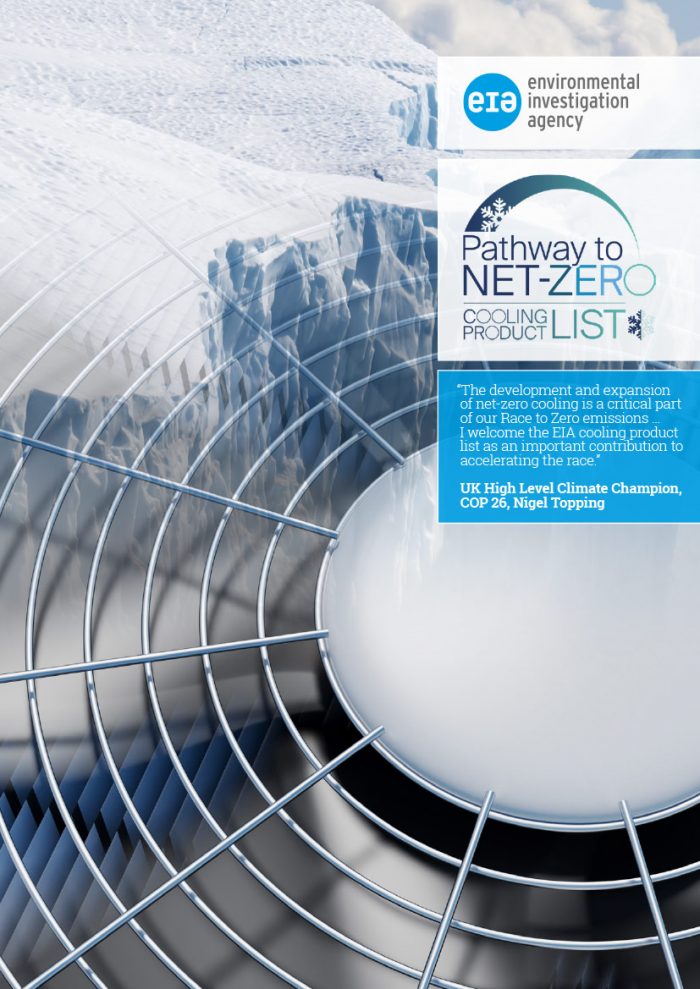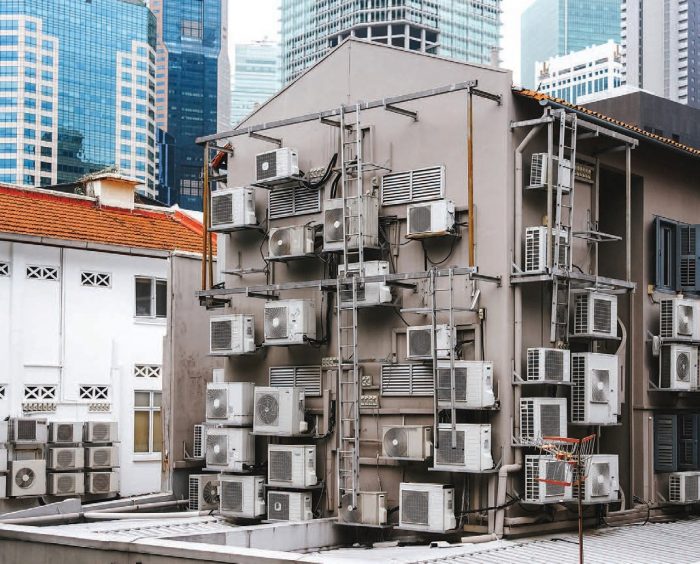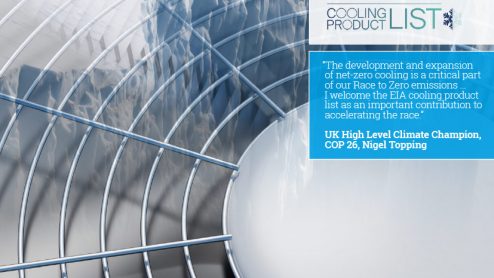If your company cares about cutting its climate footprint, you need to check out our new cooling products list!
Keeping cool in a warming world under climate change is a challenge and today we’re launching a major new guide to help companies cut their collective carbon footprint.
With average global temperatures rising, the anticipated increase in the use of air-conditioning to cool homes, workplaces and for the storage of foods and medicines poses a serious problem.
Most of the world’s refrigeration and air-conditioning systems run on fluorinated gases, also known as F-gases, most notably hydrofluorocarbons (HFCs).
 These chemicals have global warming impacts thousands of times higher than carbon dioxide and significantly contribute to and accelerate climate change – and that’s without taking into account the carbon footprint associated with generating the power necessary to run the countless millions of units in the first place.
These chemicals have global warming impacts thousands of times higher than carbon dioxide and significantly contribute to and accelerate climate change – and that’s without taking into account the carbon footprint associated with generating the power necessary to run the countless millions of units in the first place.
EIA has long been campaigning to make the switch from harmful systems running on F-gases to natural refrigerants such as ammonia, hydrocarbons and carbon dioxide, which have a much smaller impact on the climate, as part of a push to reach net-zero –achieving a balance between the greenhouse gases we put into the atmosphere and those taken out.
With the help of shecco, EIA researched and compiled the Pathway to Net-Zero: Cooling Product List to showcase some of the very best climate-friendly alternatives available and provide information on how to avoid the use of cooling and energy consumption of existing equipment.
As consumers of cooling look to reduce their carbon footprint, action on both refrigerants and energy efficiency is needed – especially with refrigerant emissions accounting for about 30 per cent of a cooling product’s climate impact.
“We know that a lot of companies are increasingly aware of the importance of doing their bit in the fight against climate change and, with this guide, we’ve sought to take some of the slog out of looking for alternatives so they can find a lot of the information and options they need in one place,” said Fionnuala Walravens, EIA Senior Climate Campaigner.
Key findings include:
- energy-efficient natural refrigerant cooling products are available across a range of sectors;
- companies looking to cut their emissions should prioritise pathway to net-zero cooling products;
- equipment producers have been slow to develop and market pathway to net-zero products in certain sectors;
- access to net-zero cooling products varies regionally, with Europe leading the pack;
- governments should do more to support the uptake of sustainable cooling, for example, by outlining cooling plans in their nationally determined contributions and considering further legislation to speed up the phase-down of HFCs.
The sectors covered in the guide are domestic, commercial, industrial and mobile air-conditioning; domestic, industrial, commercial and transport refrigeration; and domestic, commercial and industrial heat pumps.
Nigel Topping, UK High Level Climate Champion for the CoP26 international climate meeting in Glasgow later this year, said: “The development and expansion of net-zero cooling is a critical part of our Race to Zero emissions.
“In addition to technological breakthroughs and ambitious legislation, we also need sustainable consumer purchasing to help deliver wholesale systems change, and as such I welcome the EIA cooling products guide as an important contribution to accelerating the race.”
Detailed product information is also available on EIA’s Pathway to Net-Zero Cooling Product List website, which is launched alongside the report today.




